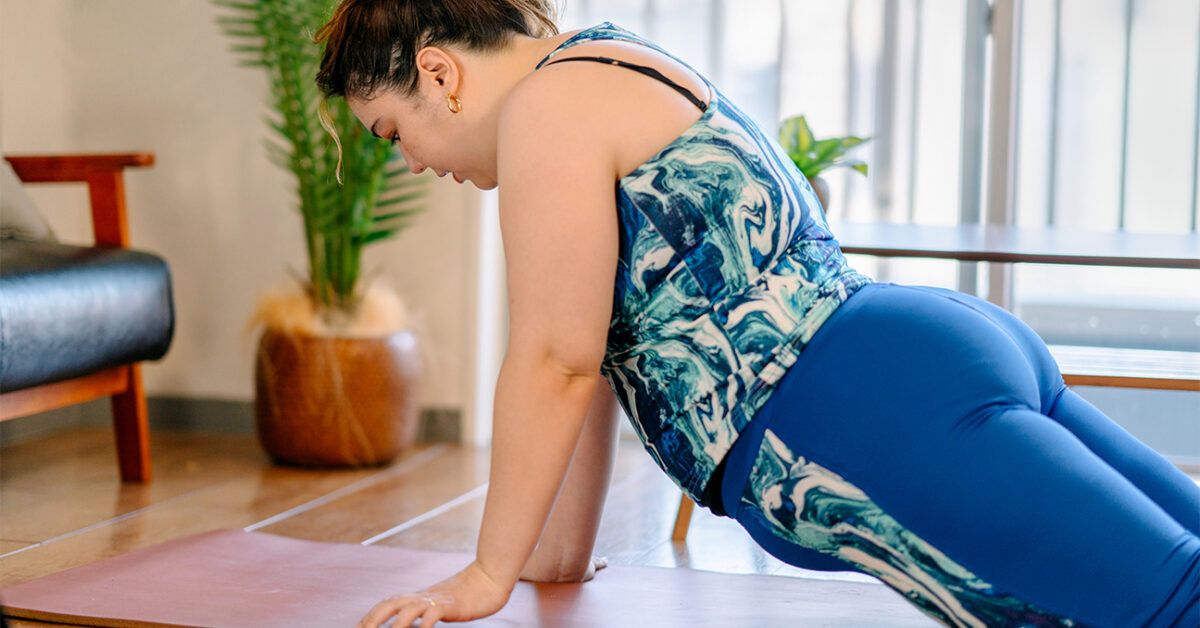For wellness, you’d be hard-pressed to find a more holistic practice than yoga. Your physical and mental health can get a boost from busting out your mat.
Physical benefits
The limb-stretching, muscle-engaging, bodyweight-bearing nature of yoga has many physical benefits.
For starters, yoga may enhance your metabolism. An older study found that people who practiced had greater metabolic efficiency and lower weight than non-yogis.
It’s clear, too, that yoga’s combo of cardio and strength torches calories. A 160-pound person can burn around 180 calories per hour, popping in and out of poses. A 2021 study revealed that both Hatha and vinyasa yoga led to weight loss, with an average of 3.4 kilograms (7.5 pounds) lost over a 6-month.
Extra strength and flexibility are two other well-known upsides of the practice. Research shows that even sedentary folks can build these elements of fitness by taking up yoga. One study showed that, after 8 weeks of practicing at least twice a week (180 minutes), people with no prior yoga experience had greater muscle strength, endurance, flexibility, and cardio-respiratory fitness.
Mental benefits
On the surface, yoga might look like mere stretching — but the practice goes far beyond the physical. Yoga engages the mind in all sorts of ways that may have benefits for overweight.
By training your brain toward calm and focus, yoga sessions encourage mindfulness. A mindful outlook can have far-reaching effects in multiple areas of life, like promoting mindful eating and greater body awareness.
As a form of self-care, yoga can also promote a healthier body image. In a 2018 study, young adults who made it a habit reported higher satisfaction levels with their bodies. Better self-esteem and motivation have also been linked to the practice.
Then, too, yoga’s stress-relieving effects might follow you off the mat and into the dining room. Some research has found that people who do yoga binge eat less often.
Wanna get started with yoga but aren’t sure how? We got you.
It all starts with setting realistic goals and expectations. If you’ve never practiced before, you won’t be pretzel-ing yourself into challenging poses like scorpion or crow overnight — and that’s OK. Consider setting smaller, step-wise goals, such as attending a 30-minute class twice a week or mastering a few basic poses. Little by little, you’ll work your way up to a more advanced practice.
It’s also wise to select a class (or video) for beginners. Check your gym or yoga studio’s schedule for introductory sessions, and don’t be afraid to let an instructor know before class that you may need some modifications. Most are happy to provide adaptations to make the class a better experience for beginners.
Meanwhile, if you’re pursuing a yoga practice for weight loss, remember to pair it with other healthy lifestyle practices for best results. Though stretching and holding poses burn calories, yoga might not take you to your weight loss goal alone. A balanced diet, cardio exercise, and sufficient sleep are other keys to achieving a healthy weight.
Yoga stereotypes of scantily clad gym babes in impossible contortions might make you feel somewhat intimidated about in-person classes. If you’re concerned that a gym session will make you self-conscious, start with an at-home practice. (YouTube is a treasure trove of classes and instructors explicitly geared for people with overweight.) All by yourself in your living room, there’s no one to impress.
Or, if you’re up for in-person yoga, let your instructor know your needs again. Modifications are always possible.
No matter where you practice, credit yourself for showing up for your health. And, at the beginning of your session, don’t forget to set an intention you find motivating or encouraging, such as “I am caring for my body” or “I am worthy of love and respect.”



